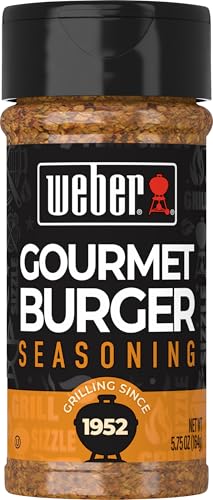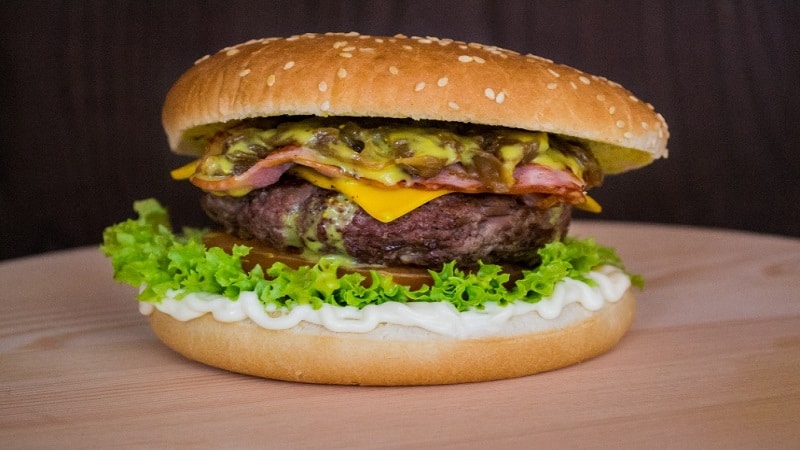Key Takeaways
- Importance of Fat Content: The fat content in burger meat significantly affects the flavor and juiciness of the final product, with higher ratios generally yielding better results.
- Types of Meat: Common burger meats include ground beef, pork, turkey, lamb, and vegetarian options, each offering unique flavors and ideal fat contents for different burger experiences.
- Ideal Ratios: Aim for fat ratios between 75/25 and 80/20 for the most flavorful and juicy burgers, while considering leaner options that may need additional moisture and flavor enhancements.
- Cooking Techniques: Different fat contents require varied cooking methods; lean meats need careful monitoring and moisture additions, while fatty meats benefit from high-heat searing and less flipping.
- Flavor Pairing: Balancing toppings and ingredients with the chosen meat’s fat content enhances the overall burger experience, making it essential to pair rich meats with zesty toppings and lean meats with creamy elements.
When it comes to crafting the perfect burger, the choice of meat can make all the difference. I’ve spent countless weekends grilling and experimenting with different blends, and I’ve learned that fat content plays a crucial role in flavor and juiciness. Whether you’re aiming for a leaner option or a rich and indulgent bite, understanding the fat content in your burger meat is key.
Understanding Burger Meat Choices
Choosing the right burger meat is crucial for crafting that memorable burger experience. The right combination of meat, particularly fat content, can elevate an ordinary burger to something extraordinary.
Types of Burger Meat
I often experiment with different types of meat when creating burgers. Ground beef remains the classic choice, but I enjoy mixing in other meats for unique flavors. Here are some popular options:
- Ground Beef: The most common option, with various fat percentages available, typically ranging from 80/20 to 90/10.
- Ground Pork: Adds a slightly sweet and rich flavor, often using a higher fat content, like 70/30, for juicier results.
- Ground Turkey: A leaner alternative, perfect for lighter burgers; it’s best to use a blend with some fat, around 85/15, to prevent dryness.
- Ground Lamb: Rich and flavorful, making an excellent choice for gourmet burgers, usually around 80/20 fat content.
- Vegetarian Options: Plant-based patties made from beans, lentils, or nuts can also be great, though they offer different textures and flavors.
Importance of Fat Content
Fat content crucially impacts the flavor and juiciness of burgers. Higher fat ratios, like 80/20, tend to yield juicier, more flavorful burgers, enhancing that satisfying sensation in each bite. When grilling, the melting fat acts as a natural basting agent, keeping the patties moist throughout the cooking process.
For a gourmet twist, I sometimes blend different meats to achieve a perfect fat ratio. Finding a balance between flavor, texture, and health-conscious choices can transform your homemade burgers into culinary masterpieces.
Fat Content Comparison
Understanding fat content in burger meat is crucial for crafting the perfect burger. The right balance enhances flavor, juiciness, and overall enjoyment. Here’s a closer look at the different types of meat and their fat contents.
Lean vs. Fatty Meats
Lean meats, like turkey and chicken, contain less fat, resulting in drier burgers that can lack rich flavor. I often find that using 90/10 ground turkey requires careful seasoning and moisture-adding ingredients, like diced onions or sauces, to keep the burger enjoyable. On the other hand, fatty meats like ground beef with an 80/20 ratio offer robust flavor and juiciness that simply can’t be matched. The fat melts during cooking, creating a delicious basting effect that keeps every bite savory.
Ideal Fat Ratios for Juiciness
When it comes to fat ratios, aiming for 75/25 to 80/20 meat blends often leads to the most mouthwatering burgers. For example, ground beef with an 80/20 ratio produces juicy, flavorful burgers that please every palate. Balancing fat with the meat’s other characteristics is key; for example, the richness of lamb pairs beautifully with its typical 80/20 fat blend. Conversely, for those who prefer leaner options, mixing in higher-fat meats or even cheese can help amplify flavor without sacrificing moisture.
Cooking Techniques for Different Fat Contents
Cooking techniques vary depending on the fat content of the meat. Understanding the right methods for each type helps achieve that perfect burger texture and flavor.
Best Methods for Lean Meat
Lean meat, like turkey or chicken, requires careful attention during cooking to prevent it from drying out. I often opt for the following techniques:
- Grilling with Care: Using medium heat prevents charring while ensuring even cooking. I keep a close watch to avoid overcooking.
- Shorter Cooking Times: Cooking lean meat for less time helps retain moisture. I aim for an internal temperature of 165°F to guarantee safety without sacrificing juiciness.
- Adding Moisture: Incorporating ingredients like diced vegetables, cheese, or even a small amount of olive oil enhances moisture levels. This trick works wonders in keeping those burgers flavorful.
Best Methods for Fatty Meat
Fatty meats like ground beef with an 80/20 ratio shine with these cooking methods:
- High-Temperature Grilling: Using high heat creates a beautiful sear, locking in the rich juices. I love getting a crispy crust while retaining that beefy flavor.
- Flipping Less Frequently: Allowing the burger to sit for a while before flipping gives it time to develop a nice crust. I usually flip just once for optimal results.
- Basting While Cooking: The melting fat serves as a natural baster, enriching the burger’s flavor. I often spoon some of those flavorful juices over the patty as it cooks to amplify the taste.
By mastering these techniques, I enhance the unique qualities of each meat type, resulting in memorable burger experiences for everyone I cook for.
Flavor Profiles Based on Fat Content
Choosing the right fat content in burger meat creates distinct flavor profiles and enhances overall burger enjoyment. Understanding how fat influences taste can help craft the perfect burger experience.
How Fat Influences Taste
Fat contributes significantly to the flavor of burgers. The more fat present, the richer and juicier the burger. I’ve experimented with various blends and consistently find that an 80/20 beef ratio delivers a robust flavor that truly satisfies. Fat acts as a flavor carrier, enhancing the meaty taste while adding a delightful mouthfeel. For leaner meats, such as turkey or chicken, the flavor lacks depth. Incorporating fat from other sources, like bacon or cheese, elevates these burgers, turning them into flavorful delights.
Pairing Ingredients for Balance
Pairing the right ingredients with your chosen fat content balances the overall flavor. For rich, fatty meats, I enjoy adding fresh, zesty toppings like pickled onions or spicy aioli. The acidity cuts through the richness, creating a harmonious bite. On the other hand, leaner burgers benefit from creamy elements, like avocado or melted cheese, which add richness without overpowering the burger’s natural flavors. I often experiment with ingredients to find that perfect blend; finding new combinations keeps my burger creations exciting and delightful for my friends and family.
Conclusion
Choosing the right burger meat is all about balance. It’s amazing how fat content can transform a simple patty into a juicy flavor bomb. I’ve had my share of experimenting with various blends and I can confidently say that finding that sweet spot between lean and rich makes all the difference.
Whether you’re grilling up a classic beef burger or trying something new with turkey or lamb, remember to consider the fat content. It not only impacts the taste but also the overall experience. So next time you’re at the butcher or grocery store, keep these tips in mind and enjoy creating your perfect burger masterpiece. Happy grilling!















